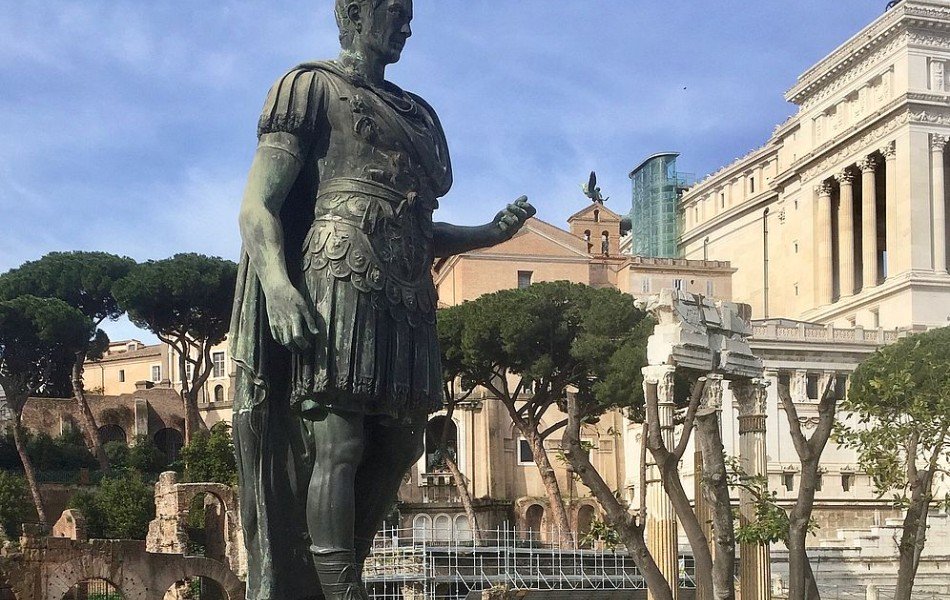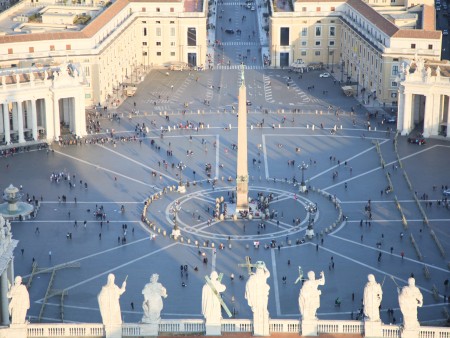Julius Caesar Between Democracy and Absolute Power
The rise during the Republic, the wars of conquest in Gaul, the dictatorship, and the murder on the Ides of March

27 January 2025
Rome Travel GuideUnderstanding Contexts to Understand History: Julius Caesar Between Republic and Empire
Today, the dominant trend is to view the past through the lens of modern political, moral, and cultural categories, quickly labeling the actions of historical figures as "right" or "wrong," even though they operated in entirely different contexts. This approach, unsurprisingly, often leads to the trap of condemning almost everyone. Julius Caesar is no exception; judged through today’s eyes, he could easily be seen as a dictator far more ruthless and violent than the most bloodthirsty despots of the 20th century (Hitler, Stalin, Mussolini) or even of our times.
Historians, however, take a different approach. Through years of study and reflection, they develop a kind of internal time machine that allows them to immerse themselves in the past, adopting the perspectives of the eras they investigate while setting aside contemporary viewpoints.
Julius Caesar: The Perfect Strategist for Pre-Imperial Rome
Seen through the lens of historical perspective, Julius Caesar appears quite different from the simplistic judgments often made about him today. No longer just the contradictory leader, seemingly drawn to power-sharing ideals but ruthlessly pragmatic in his realpolitik. Instead, he emerges as the perfect strategist for pre-imperial Rome - a Rome caught between the old and the new: between the aging Republic, which proved inadequate for managing an ever-expanding territory, and the coming Empire, with its hierarchical structure necessary to govern diverse peoples, lands, and cultures stretching from Britain to modern-day Tunisia.
Julius Caesar stands at this crossroads, witnessing the dissolution of the Republic while the Empire has yet to take shape. His vision of the state ultimately proves to be the winning formula for the era in which he lived. Fifty years earlier or later, he would likely have failed spectacularly.
The Rise of Julius Caesar: From the Triumvirate with Pompey and Crassus to Dictatorship
This transitional path between the Republic and the Empire is clearly reflected in Julius Caesar’s political career. In the beginning, his political vision is shaped by the Republican framework. The Triumvirate, formed with Pompey and Crassus, still carries the idea that power should be shared among individuals with diverse skills, that unity creates strength, as we might say today.
However, it soon becomes evident that this form of governance becomes a limitation when the key focus shifts to "expansion." Conquering Gaul, invading Britain or Spain, and extending influence into North Africa are undertakings that require tremendous effort and, above all, a single-minded leadership, one capable of making decisions without mediation or compromise. Julius Caesar would become dictator—and the singular mind would be his.
Julius Caesar and Modern Rome
If we want to "update" Julius Caesar, let’s not judge him through today’s lens. Instead, let’s take a walk through modern Rome to visit the places that played a crucial role in his life. One such site is undoubtedly the Forum of Caesar—or at least the remains that have survived to this day, which are part of the Roman Forums. The Forum was a square with tabernae (shops and offices) that Julius Caesar decided to dedicate to himself and inaugurated in 46 BCE, even though the construction was not yet complete. Work on the Forum continued even after the assassination of the great Roman statesman, and it was later renovated and eventually destroyed by the fire of 283 CE.
In Which District of Rome Was Julius Caesar Born? The Suburra, Now Rione Monti
Fewer direct traces of Julius Caesar's time remain in his birthplace, but the area still holds plenty of modern-day interest. From what we know, Julius Caesar was born in the Suburra, a maze of small streets and alleys inhabited by the lower classes of ancient Rome. Today, that area serves a completely different purpose within modern Rome. Known as Rione Monti, it lies between Via Nazionale and Via Cavour and has become a hub of nightlife, filled with countless bars, restaurants, and pizzerias welcoming both tourists and locals looking for entertainment. Of pre-Imperial Rome, no trace remains, as the area was completely rebuilt in later periods, up until the 19th century.
The Death of Julius Caesar on the Ides of March, 44 BCE, at Largo di Torre Argentina in Rome
Something contemporary to Julius Caesar can still be seen at the exact location where the great leader was assassinated on March 15, 44 BCE - known to the Romans as the Ides of March - killed in a conspiracy that forever ended his reign. According to most historians, the murder took place at the Curia of Pompey, a temporary meeting place for the Roman Senate, rather than the historic Curia within the Roman Forum, today known as the Curia Julia. At the time, was inaccessible due to ongoing construction work initiated by Caesar to complete his Forum, redefining the symbolic importance of the Curia in relation to the new focal point: the Temple of Venus located at the center of his Forum.
What remains of the Curia of Pompey is now part of the Sacred Area of Largo di Torre Argentina and can be visited by tourists.
In conclusion, if we want to understand Julius Caesar, let’s avoid projecting him into the modern world; it’s better to immerse ourselves in his. And from there, who knows? We might activate that inner “time machine” that helps us truly comprehend the past.
To learn more about the life of Julius Caesar by placing the key events of his rise in the Roman Forum where they occurred, we recommend the innovative and dynamic Colosseum Audio Guide.
Our categories:
You may also be interested ...

Vatican Private Tour with Sistine Chapel & St. Peter's Basilica: Renaissance’s Wonders
Private tour
Discover with a skip the line Private Vatican Tour the Sistine Chapel, Vatican Museums and St Peter’s Basilica
starting from: € 375

Colosseum Guided Audio Tour with Roman Forum and Palatine Hill
Private tour
Discover Ancient Rome’s secrets and history with our immersive Colosseum guided audio tour, rich in image and content
starting from: € 51 € 42